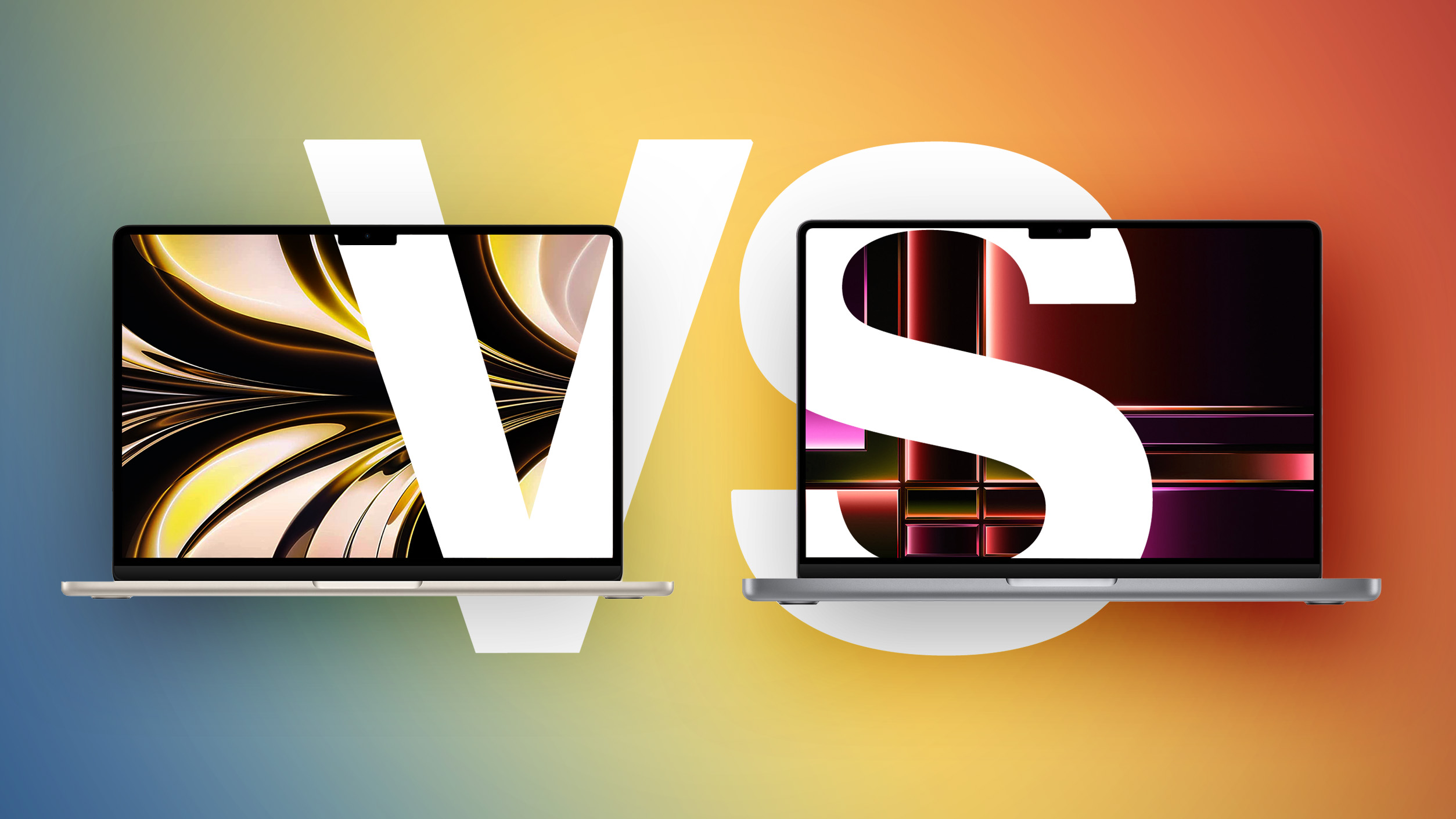
Despite now being similar in appearance, the MacBook Air and the MacBook Pro are very different machines, so should you consider purchasing the MacBook Air, which starts at $1,199, to save money, or do you need one of the higher-end 14- or 16-inch MacBook Pro models, which cost at least $800 more? Our guide helps to answer the question of how to decide which of these two popular Apple silicon machines is best for you.
This guide focuses on the high-end, 14- and 16-inch MacBook Pro models with the M2 Pro and M2 Max chips rather than the 13-inch MacBook Pro with the M2 chip. See our other buyer's guide to understand the differences between the 13-inch MacBook Pro and the 14- and 16-inch models.
Key Differences Overview
MacBook Air
- 13.6-inch display
- LCD Liquid Retina display display
- 500 nits brightness
- Apple M2 chip
- 8-core CPU with with four performance cores and four efficiency cores
- 10-core GPU
- 100GB/s memory bandwidth
- 8GB, 16GB, or 24GB of unified memory
- 256GB, 512GB, 1TB, or 2TB of storage
- Passive cooling
- Wi-Fi 6
- Bluetooth 5.0
- Two Thunderbolt / USB 4 ports
- Four-speaker sound system
- Three-mic array with directional beamforming
- Integrated 52.6-watt-hour lithium-polymer battery
- Up to 18 hours battery life
- 30W, 35W, or 67W USB-C Power Adapter
MacBook Pro
- 14.2-inch or 16.2-inch display
- Mini-LED Liquid Retina XDR display with ProMotion
- Up to 1,000 nits sustained (full-screen) brightness and 1,600 nits peak brightness
- Apple M2 Pro chip or Apple M2 Max chip
- Up to 12-core CPU with eight performance cores and four efficiency cores
- Up to 19-core GPU with M2 Pro and up to 38-core GPU with M2 Max
- Up to 400GB/s memory bandwidth
- 16GB or 32GB unified memory with M2 Pro and 32GB, 64GB, or 96GB unified memory with M2 Max
- 512GB, 1TB, 2TB, 4TB, or 8TB of storage
- Active cooling
- Wi-Fi 6E
- Bluetooth 5.3
- Three Thunderbolt 4 (USB-C) ports
- HDMI 2.1 port with support for multichannel audio output
- SDXC card slot
- High-fidelity six-speaker sound system with force-cancelling woofers
- Studio-quality three-mic array with high signal-to-noise ratio and directional beamforming
- Integrated 70-watt-hour or 100-watt-hour lithium-polymer battery
- Up to 18 or 22 hours battery life
- 67W, 96W, or 140W USB-C Power Adapter
Design
Both the MacBook Air and MacBook Pro share the same basic design with a flat top and rounded edges on the bottom, but they do have several minor details that differ. For example, while both MacBooks have displays with a "notch" at the top to facilitate the built-in webcam, the MacBook Pro's bezels are noticeably slimmer. The keyboard area of the high-end MacBook Pro is also all-black.
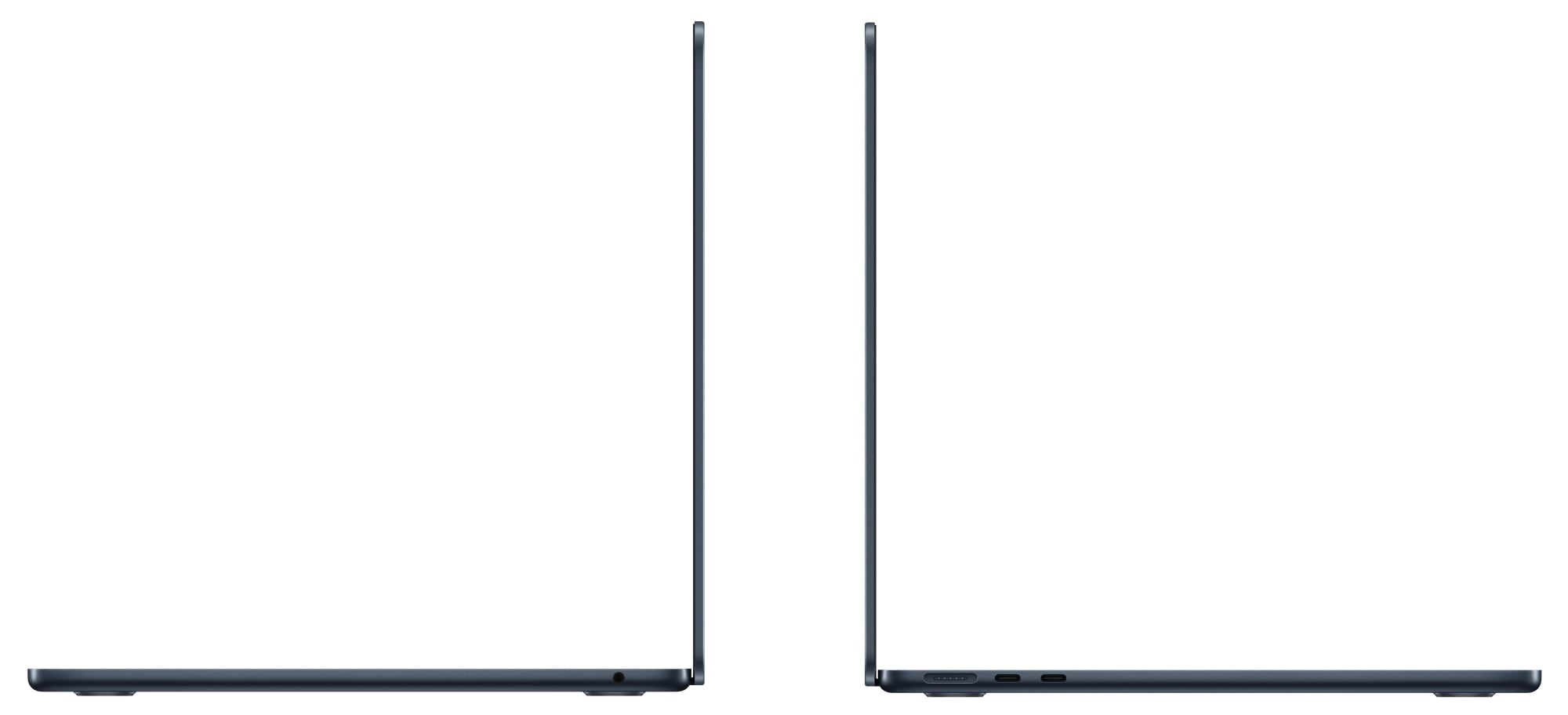
The MacBook Air and MacBook Pro are available in Silver and Space Gray, but the MacBook Air is also offered in Starlight and Midnight color options, so if you are looking for a particular aesthetic with one of these finishes, you will need to get the MacBook Air.
MacBook Air
- Height: 0.44 inches (1.13 cm)
- Width: 11.97 inches (30.41 cm)
- Depth: 8.46 inches (21.5 cm)
- Weight: 2.7 pounds (1.24 kg)
MacBook Pro
- Height: 0.61 inches (1.55 cm)/0.66 inch (1.68 cm)
- Width: 12.31 inches (31.26 cm)/14.01 inches (35.57 cm)
- Depth: 8.71 inches (22.12 cm)/9.77 inches (24.81 cm)
- Weight: 3.5 to 4.8 pounds (1.60 to 2.16 kg)
Dimensions are also a key area of difference between the MacBook Air and MacBook Pro. The 16-inch MacBook Pro is considerably larger and heavier than the MacBook Air, but it is important to not understate the difference between the 14-inch MacBook Pro and the MacBook Air. While the 14-inch MacBook Pro offers a larger display than the MacBook Air, its marginally larger footprint, added thickness, and an additional 0.8 pounds of weight do make for a noticeably less portable machine if you prefer to travel light.
Even so, the 14-inch MacBook Pro offers a very good balance of portability and performance, so if you need its added capabilities, its size and weight should not hold you back.
Ports and Connectivity
The selection of ports is an area of major difference between the two machines. The MacBook Air features just two Thunderbolt 4 ports. The 14-inch and 16-inch MacBook Pro models, on the other hand, have three Thunderbolt 4 ports, an HDMI 2.1 port, and an SDXC card slot. Both machines feature a 3.5mm headphone jack with support for high-impedance headphones, but the 13-inch MacBook Air can support only one external display, while the high-end MacBook Pro model can support up to four displays in total with the M2 Max chip.
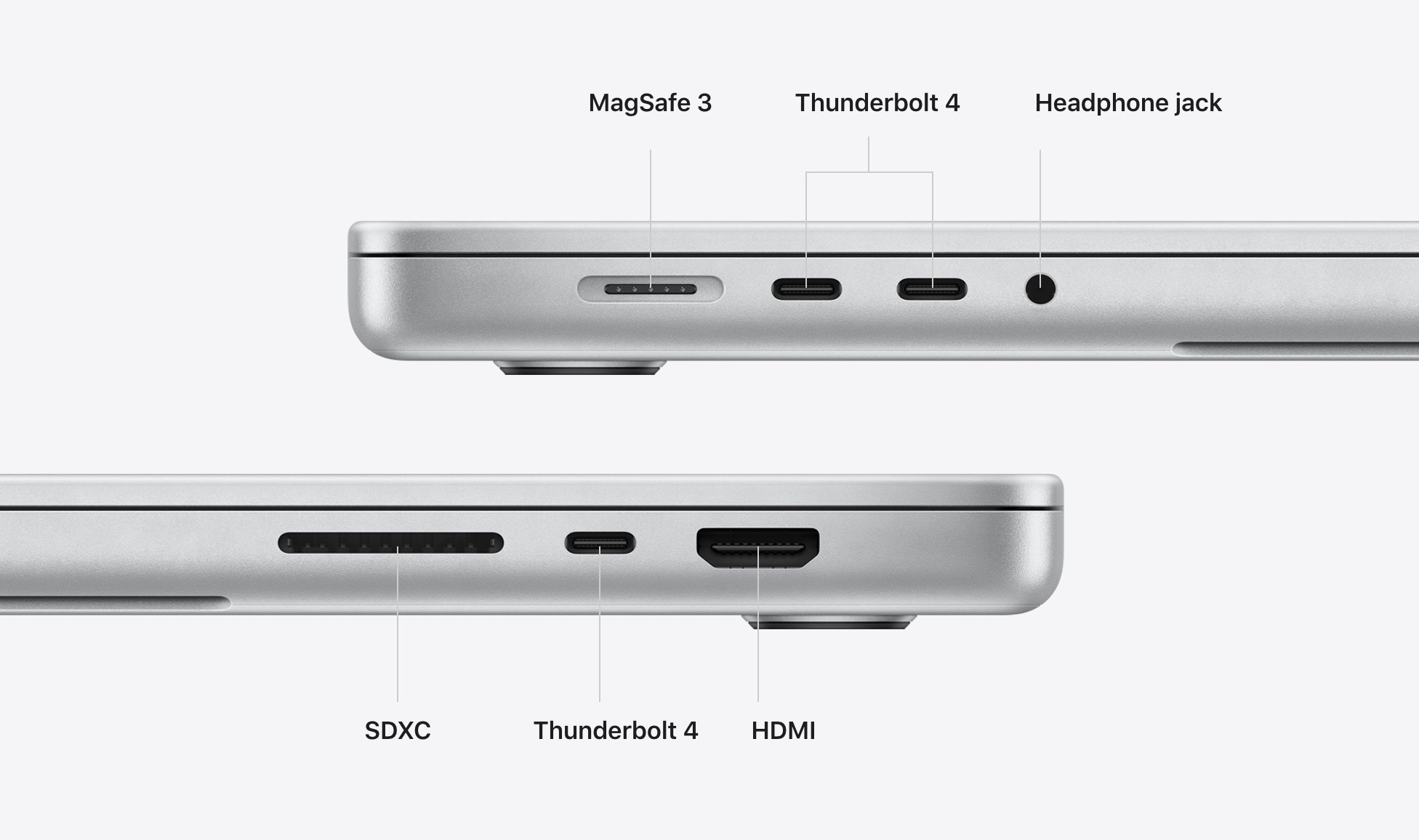
All in all, the MacBook Pro is much more versatile in terms of connectivity, even possessing newer Bluetooth and Wi-Fi specifications, offering useful features for professionals who use SDXC cards from digital cameras, multiple external displays, or even simply more USB peripherals.
Display Size
The MacBook Air's display is 13.6 inches in size, which is a little smaller than the 14.2-inch MacBook Pro, and markedly smaller than the 16.2-inch MacBook Pro. 13.6 inches is still bigger than the largest iPad Pro model, which comes in at 12.9 inches, and even all of the previous MacBook Air and smaller MacBook Pro models, meaning that it should be adequate for most users. The 14.2-inch MacBook Pro simply offers a little bit more screen real estate to those who need high-end capabilities.
The 16.2-inch display will be a better replacement for a desktop machine and provide much more screen space to arrange multiple windows and use professional applications that benefit from additional display area.
Display Technology
The display technologies of both machines are significantly different. Like most MacBooks in recent years, the MacBook Air has an LCD panel, but owing to its slim bezels and rounded corners, Apple calls it a Liquid Retina display. The 14- and 16-inch models feature Apple's more advanced mini-LED Liquid Retina XDR technology for deeper blacks, better dynamic range, and improved color accuracy.
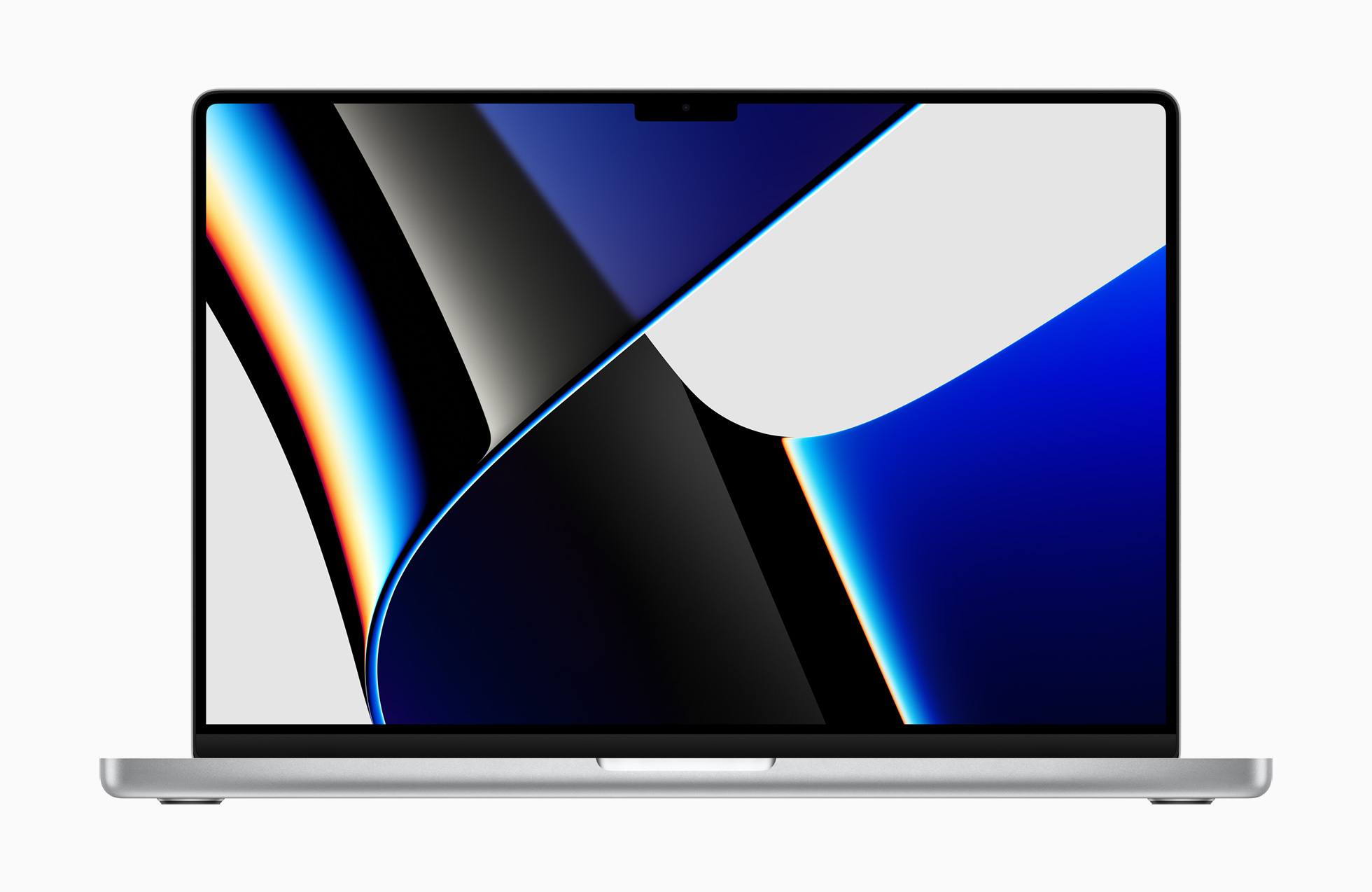
The XDR display can get much brighter, reaching as high as 1,600 nits of brightness at its peak when showing HDR content. The 14- and 16-inch MacBook Pro models also have ProMotion displays, allowing them to vary their refresh rate up to 120Hz. The MacBook Air does not have a display with a variable refresh rate.
It will be worth getting the high-end MacBook Pro models for viewing and editing HDR content, as well as watching high-framerate video such as sports. The display of the MacBook Air is sufficient for most users and some may not even notice a drastic difference. The MacBook Pro's deeper blacks and smoother on-screen motion simply offer a slightly better experience.
Chips
The MacBook Air contains the M2 chip, while MacBook Pro customers can choose between the M2 Pro and M2 Max chips. The M2 Pro and M2 Max are scaled-up versions of the M2 chip that offer additional CPU and GPU cores. See the M2, M2 Pro, and M2 Max's Geekbench 5 scores below:
Single-Core Scores
- M2: ~2,000
- M2 Pro: ~2,000
- M2 Max: ~2,000
Metal GPU Scores
- M2: ~30,500
- M2 Pro: ~52,700
- M2 Max: ~87,000
Multi-Core Scores
- M2: ~9,000
- M2 Pro: ~15,000
- M2 Max: ~15,000
The M2 Pro and M2 Max provide CPUs with up to four additional cores and GPUs with up to 28 additional cores. The M2 chip in the MacBook Air is just as powerful as the M2 Pro and M2 Max in single-core tasks, but the M2 Pro and M2 Max are considerably better in multi-core and graphics tasks.

With significantly more transistors, performance CPU cores, and GPU cores, the M2 Pro and M2 Max are powerful chips designed for professionals with demanding workflows. The M2, on the other hand, is more of a consumer-oriented chip focused on delivering surprisingly impressive performance and excellent efficiency to keep temperatures down and prolong battery life.
It is also worth noting that the MacBook Air is passively cooled and contains no fan, which can slightly constrain peak performance compared to the MacBook Pro, since the high-end machines have large fans to actively cool the system and push the chips harder.
Memory and Storage
The MacBook Air can be configured with up to 24GB of unified memory and up to 2TB of storage, which should be more than enough for the vast majority of users. For those who need even more memory and storage, the MacBook Pro can be configured with 72GB more memory and 6TB more storage than the top-spec MacBook Air.
The M2 Pro and M2 Max chips in the MacBook Pro also provide 200GB/s and 400GB/s memory bandwidth respectively – an enormous increase over the 100GB/s memory bandwidth with the M2 chip in the MacBook Air.
Buyers should also be aware that the 256GB MacBook Air and 512GB MacBook Pro base models have up to 50 percent slower SSDs than configurations with more storage. This is because the base models only have a single SSD module inside, whereas models with larger amounts of storage have two SSD chips, significantly increasing the overall speed of the machine's storage.
Speakers and Microphones
The MacBook Air has a four-speaker sound system that is surprisingly full and balanced for such a small, slim device. The MacBook Pro takes things to the next level with a high-fidelity six-speaker sound system with force-cancelling woofers for dramatically bigger and deeper audio – something that may be invaluable to users who work in professional audio production or simply listen to a lot of music out-loud.
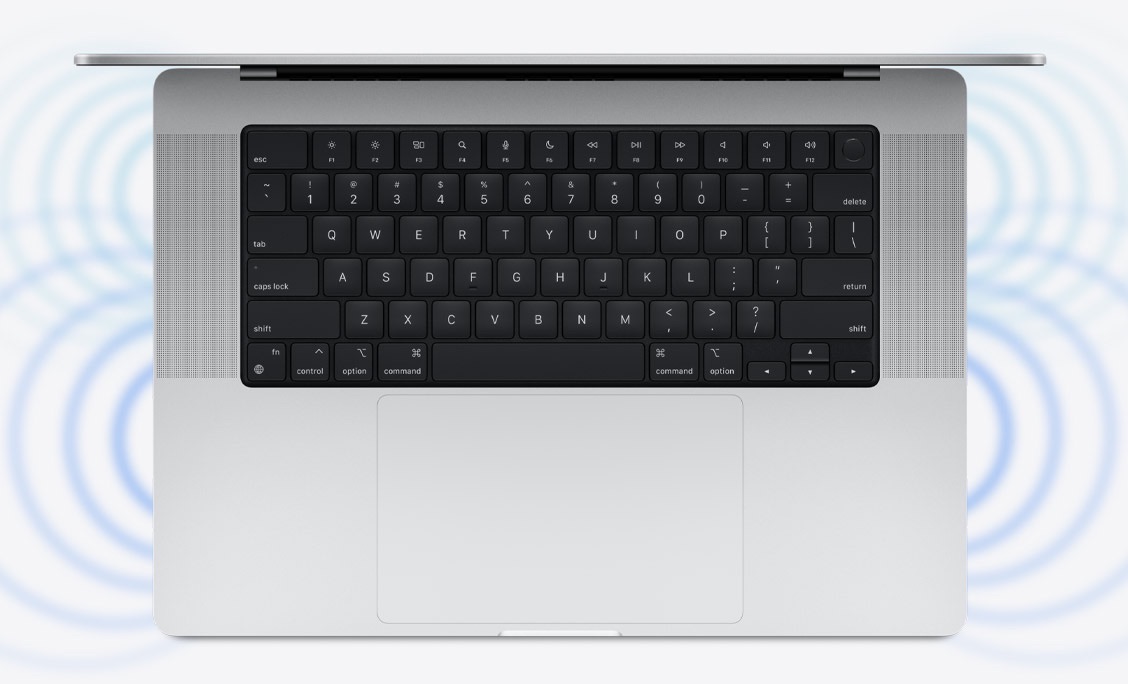
The MacBook Air has a three-mic array with directional beamforming that is perfect for activities like video calls and voice notes. The MacBook Pro has what Apple calls a "studio-quality" three-mic array with high signal-to-noise ratio and directional beamforming. While they are not as good as a dedicated microphone, the MacBook Pro's microphones are impressive and, at a push, are suitable for production purposes like podcasting.
Battery Life
The MacBook Air has an 18-hour battery life, offering the same battery life as the 14-inch MacBook Pro and four hours less than the 16-inch MacBook Pro.
Other MacBook Options
If you are looking for a more affordable Apple silicon MacBook, there is the M1 MacBook Air, which sports a 13.3-inch Retina display, Touch ID, two Thunderbolt ports, and more, for prices starting at $999. For users on a strict budget, the M1 MacBook Air is still a good option.
For just $100 more than the M2 MacBook Air, there is the M2 MacBook Pro – an entry-level MacBook Pro model that has a 13.3-inch display and uses the same design that dominated all of Apple's MacBook Pro models from 2016 to 2021. It has the same chip as the MacBook Air but can push it slightly harder due to having a fan for active cooling, and offers a brighter display, the Touch Bar, better microphone and speaker quality, and two extra hours of battery life. If you cannot afford the 14-inch MacBook Pro's $1,999 price tag, but you think you will need slightly more than what the M2 MacBook Air has to offer, the 13-inch MacBook Air offers a good middle-ground option for some.
Final Thoughts
Overall, the MacBook Air is the best option for most users, offering an excellent balance of features and performance in a highly portable design. The MacBook Air's $1,199 price tag is affordable compared to the MacBook Pro, and with an education discount or an offer from our Apple Deals Roundup, it is possible to get that price down by at least $100. The additional $800 to get the MacBook Pro likely is not worth it for most users, and on the contrary, many will prefer the slimmer, lighter design of the MacBook Air and perhaps even its additional color options.
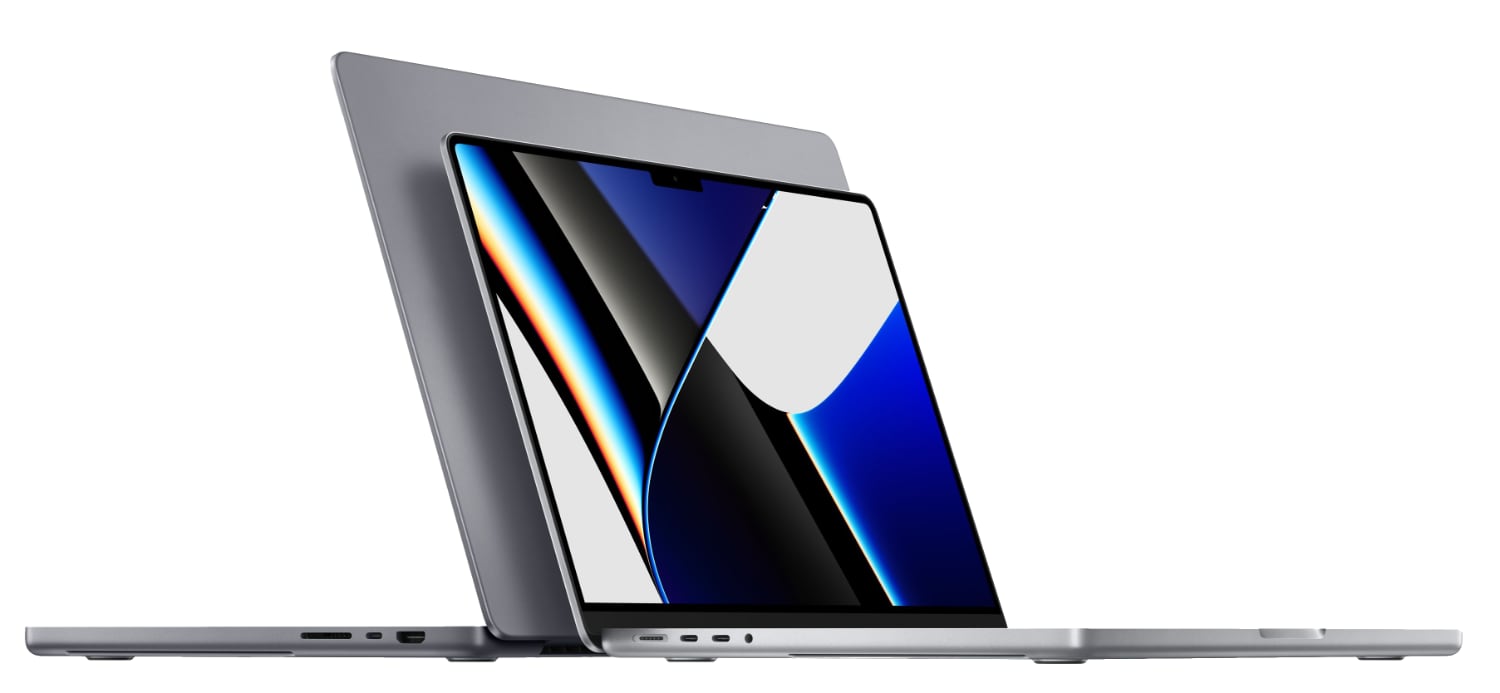
Professionals who require larger and more accurate displays, additional ports, more memory and storage, and a very high level of performance should look to the 14- and 16-inch MacBook Pro, and the $1,999 and $2,499 price points of these machines reflects this. These high-end MacBook Pros are not targeted at everyday consumers, being clearly tailored to creatives and professionals who rely heavily on the capabilities of their machines. As such, the MacBook Pro should only be a go-to option if you are a power-user or professional who can make use of its advanced features.
Alternatively, if you are a tech enthusiast who can afford to pay a lot more to get the MacBook Pro, aspects like its larger Liquid Retina XDR display with ProMotion and six-speaker sound system can be enjoyed by almost any user. If you simply want the best possible performance, connectivity, display technology, and speakers, the high-end MacBook Pro is the best option. The 16-inch MacBook Pro, in particular, is also potentially a good desktop replacement machine due to its large display.
If you configure the MacBook Air with its 10-core GPU option, 16GB of memory, and 512GB of storage to build a configuration that is closer to the 14-inch MacBook Pro, it costs $1,699 – just $300 less than the MacBook Pro. At this point, it may be worth paying the extra cash to get the 14-inch MacBook Pro, since that machine's performance, larger mini-LED display with ProMotion, additional ports and memory bandwidth, and better speakers and microphone deliver a big upgrade.
This article, "MacBook Air vs. MacBook Pro Buyer's Guide" first appeared on MacRumors.com
Discuss this article in our forums
source https://www.macrumors.com/guide/macbook-air-vs-macbook-pro-buyers-guide/







0 Comments